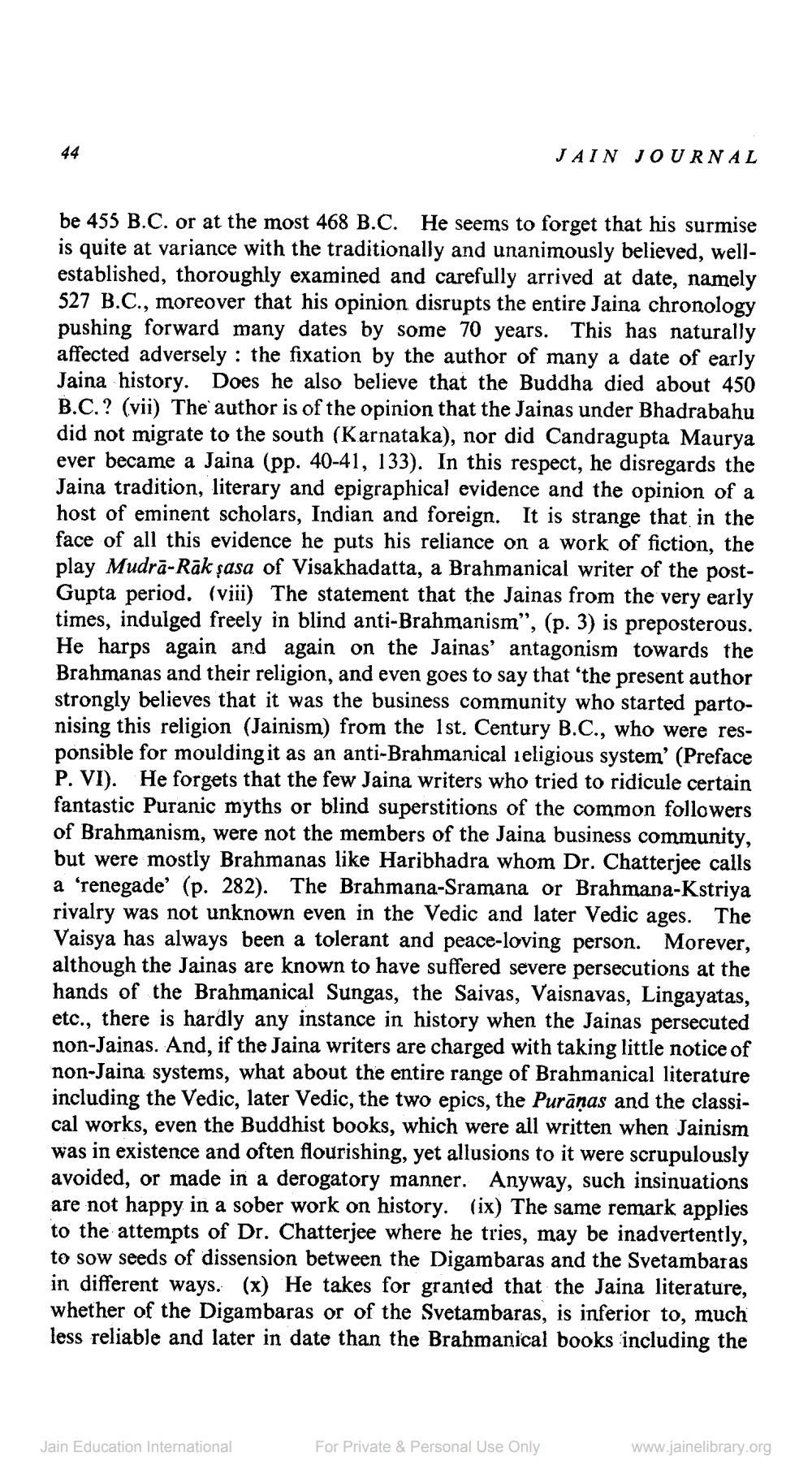Book Title: Jain Journal 1978 07 Author(s): Jain Bhawan Publication Publisher: Jain Bhawan Publication View full book textPage 4
________________ JAIN JOURNAL be 455 B.C. or at the most 468 B.C. He seems to forget that his surmise is quite at variance with the traditionally and unanimously believed, wellestablished, thoroughly examined and carefully arrived at date, namely 527 B.C., moreover that his opinion disrupts the entire Jaina chronology pushing forward many dates by some 70 years. This has naturally affected adversely : the fixation by the author of many a date of early Jaina history. Does he also believe that the Buddha died about 450 B.C.? (vii) The author is of the opinion that the Jainas under Bhadrabahu did not migrate to the south (Karnataka), nor did Candragupta Maurya ever became a Jaina (pp. 40-41, 133). In this respect, he disregards the Jaina tradition, literary and epigraphical evidence and the opinion of a host of eminent scholars, Indian and foreign. It is strange that in the face of all this evidence he puts his reliance on a work of fiction, the play Mudrā-Rāk şasa of Visakhadatta, a Brahmanical writer of the postGupta period. (viii) The statement that the Jainas from the very early times, indulged freely in blind anti-Brahmanism”, (p. 3) is preposterous. He harps again and again on the Jainas' antagonism towards the Brahmanas and their religion, and even goes to say that 'the present author strongly believes that it was the business community who started partonising this religion (Jainism) from the 1st. Century B.C., who were responsible for moulding it as an anti-Brahmanical ieligious system' (Preface P. VI). He forgets that the few Jaina writers who tried to ridicule certain fantastic Puranic myths or blind superstitions of the common followers of Brahmanism, were not the members of the Jaina business community, but were mostly Brahmanas like Haribhadra whom Dr. Chatterjee calls a ‘renegade' (p. 282). The Brahmana-Sramana or Brahmana-Kstriya rivalry was not unknown even in the Vedic and later Vedic ages. The Vaisya has always been a tolerant and peace-loving person. Morever, although the Jainas are known to have suffered severe persecutions at the s of the Brahmanical Sungas, the Saivas, Vaisnavas, Lingayatas, etc., there is hardly any instance in history when the Jainas persecuted non-Jainas. And, if the Jaina writers are charged with taking little notice of non-Jaina systems, what about the entire range of Brahmanical literature including the Vedic, later Vedic, the two epics, the Puranas and the classical works, even the Buddhist books, which were all written when Jainism was in existence and often flourishing, yet allusions to it were scrupulously avoided, or made in a derogatory manner. Anyway, such insinuations are not happy in a sober work on history. (ix) The same remark applies to the attempts of Dr. Chatterjee where he tries, may be inadvertently, to sow seeds of dissension between the Digambaras and the Svetambaras in different ways. (x) He takes for granted that the Jaina literature, whether of the Digambaras or of the Svetambaras, is inferior to, much less reliable and later in date than the Brahmanical books including the Jain Education International For Private & Personal Use Only www.jainelibrary.orgPage Navigation
1 2 3 4 5 6 7 8 9 10 11 12 13 14 15 16 17 18 19 20 21 22 23 24 25 26 27 28 29 30 31 32 33 34 35 36 37 38 39 40 41 42 ... 52
